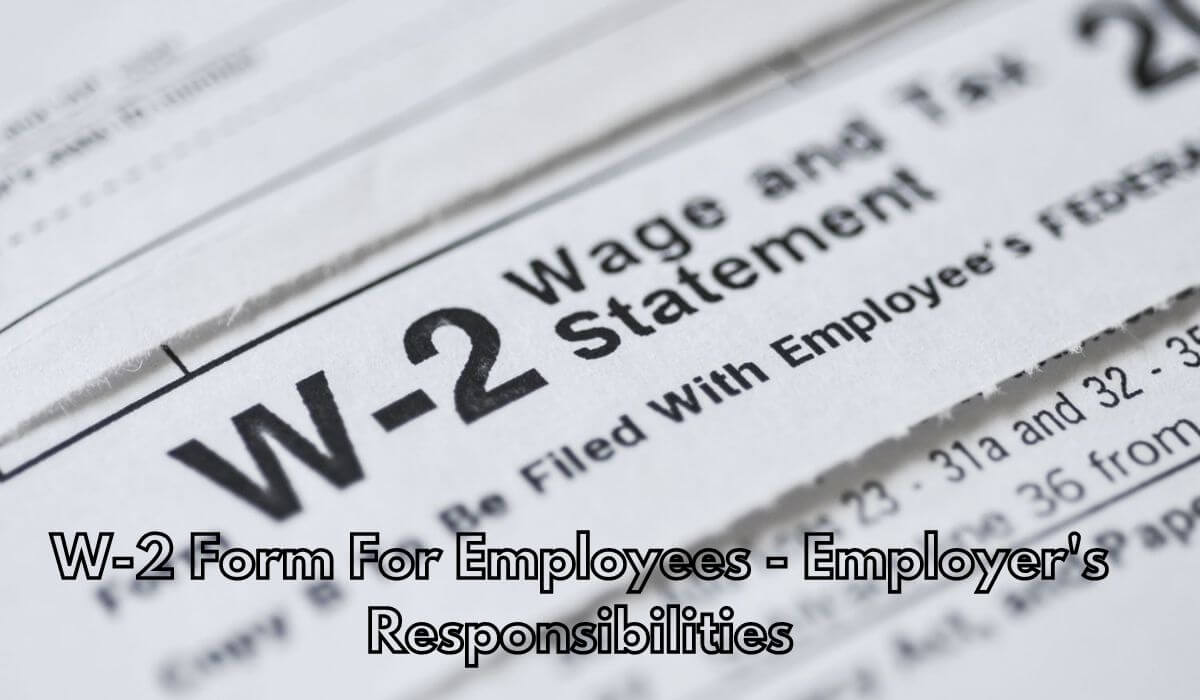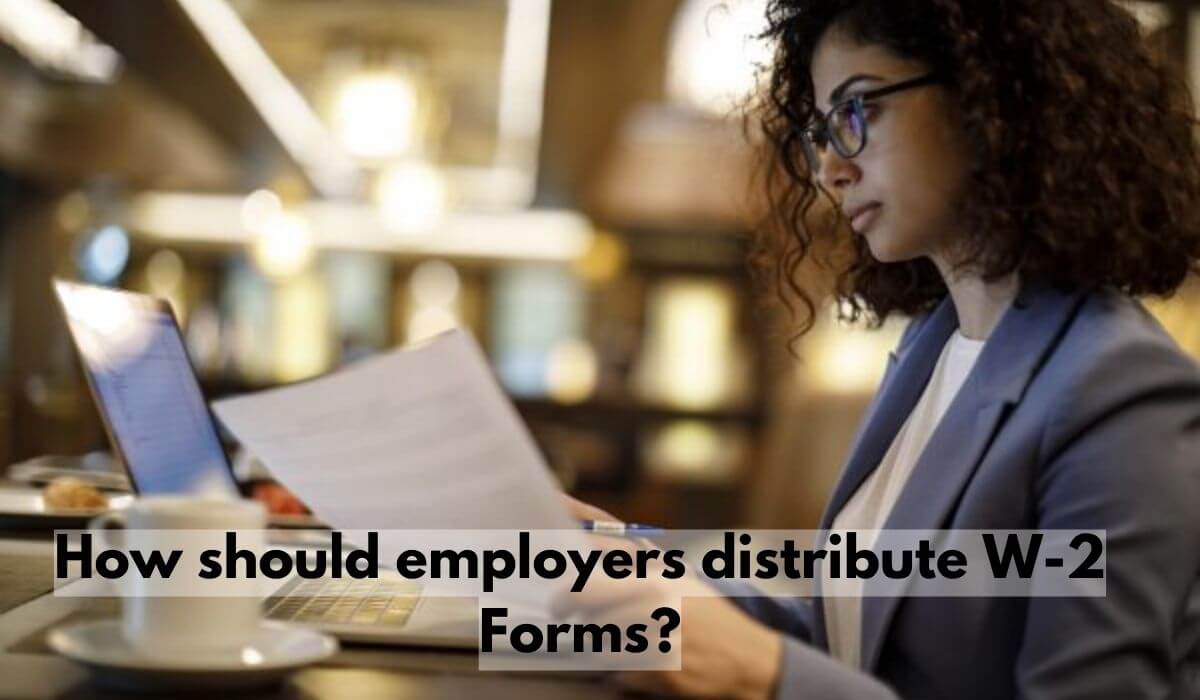W-2 Form: Everything You Need To Know Employer's Responsibilities
A W-2 Form is an Internal Revenue Service (IRS) form that employers must use to report wages and taxes withheld from employees’ paychecks. It also includes other income, such as tips, bonuses, commissions, or other compensation. Employers have several responsibilities when it comes to issuing W-2 Forms.
Understanding what these requirements are, and taking the necessary steps to fulfill them, is key to ensuring compliance with federal law. In this blog post, we will discuss the employer’s responsibility when filing a W-2 Form.
Employers must report wages and taxes withheld from employees’ paychecks on the W-2 Form. This includes wages or salaries, as well as taxes that were withheld from those earnings. Employers are responsible for accurately calculating and reporting these numbers to ensure the accuracy of their employee’s tax filing information.
What Is Form W-2?
Form W-2 is an Internal Revenue Service tax form used in the United States to report employee salaries and taxes withheld. A W-2 tax form contains crucial information about your employer's income, the amount of taxes deducted from your paycheck, the perks offered, and other information for the year.
When do employers need to provide a W-2 Form?

Employers are required to provide employees with their W-2 Form no later than January 31st of the year following the calendar year in which wages were paid. For example, if an employer pays wages in 2022, they must issue the employee's W-2 Form no later than January 31, 2023. The employer is also required to send a copy of the employee’s W-2 Form to the IRS by the same date.
Employers must also ensure that all information reported on the W-2 Form is accurate. This includes wages and withholdings, as well as other income and deductions. Employers need to double-check all data before filing their W-2 Forms to avoid potential penalties.
What information needs to be included on the W-2 Form?
A W-2 tax form contains crucial information about your employer's income, the amount of taxes deducted from your paycheck, the perks offered, and other information for the year. This form is used to file your state and federal taxes.
The W-2 Form includes several pieces of information that employers must include when filing. This includes:
-
Employee’s name, address, and Social Security number.
-
Employer’s name, address, and EIN (Employer Identification Number).
-
Federal income tax withheld from employee’s paycheck.
-
Any other identifying information (such as date of birth or employee identification number).
-
The name of the employer’s federal tax identification number.
-
Total wages paid to employees during the year.
-
Wage information (total wages earned during the calendar year and total federal income tax withheld). This includes wages and withholdings, as well as other income and deductions.
-
Other types of compensation (such as tips or bonuses).
-
Employers must also list any state and local taxes withheld from an employee's wages as well as any additional benefits the employee may have received, such as a 401(k) contribution.
Finally, employers must also ensure that all information reported on the W-2 Form is accurate. Employers need to double-check all data before filing their W-2 Forms to avoid potential penalties.
How should employers distribute W-2 Forms?
Employers must provide employees with their W-2 Forms either by mail or in person. If an employer chooses to mail the form, they must use one of several approved mailing methods that ensure that the recipient receives it in a timely manner. Employers may also choose to provide W-2 Forms electronically, provided that the employee agrees to receive their form in this way.
What are the penalties for failing to comply with IRS requirements?
Failure to comply with IRS requirements regarding W-2 Form filing can result in serious penalties. Employers may be subject to fines and other penalties if they fail to provide employees with their W-2 Forms by the required deadline or if the form is incomplete or inaccurate.
Employers who willfully fail to file an accurate W-2 Form may also face criminal prosecution. To avoid these penalties, employers should make sure that they comply with all applicable filing requirements and ensure that their W-2 Forms are accurate.
Additional Resources

Employers who need help understanding their responsibilities when filing a W-2 Form can find information on the IRS website. Additionally, there are many tax preparation software programs available to assist with filing taxes and issuing W-2 Forms accurately.
Employers should also consult with an accountant or tax attorney if they have any questions or need additional guidance.
Furthermore, employers should keep up to date on any changes to IRS regulations regarding W-2 Form filing, as these can change from year to year. By understanding their responsibilities when issuing a W-2 Form and staying informed about any new requirements that may apply, employers can ensure they are in compliance with IRS regulations.
FAQs
How much money do I need to make to get a W-2?
600$. If you made $600 or more from your employer in a given year, they are required by law to provide you with a W-2. If your employer withheld taxes from your wages, you would also receive a W-2. 3 Take note that you will receive a 1099 instead of a W-2 if paid as a contractor rather than an employee.
What’s the difference between a W-2 and 1099?
Payments paid to freelancers should be reported using Form 1099-MISC (which covers their employment taxes). On the other hand, workers utilize a W-2 form (whose employer withholds payroll taxes from their earnings).
What’s the difference between a W-2 and 1099?
Yes, W-2s be completed online. CPAs, accountants, registered agents, and other persons who process W-2s (the Wage and Tax Statement) and W-2Cs can use this service for quick, easy, and secure online W-2 filing (Statement of Corrected Income and Online W-2 filing is permitted.
Tax Amounts).
What happens if there is an error on a W-2?
Make an appointment at a Taxpayer Assistance Center by calling the IRS at (800) 829-1040 or calling toll-free (800) 829- 1040. (TAC). The IRS will write to your company to request a revised W-2 be sent to you within ten days.
Can an employer charge for a replacement W-2?
Yes. Employers must provide replacement W-2 forms to employees upon request and may charge a "nominal price" for doing so.
Wrapping Up
In conclusion, employers need to understand their responsibilities when filing a W-2 Form. This includes understanding when the form must be provided (no later than January 31st of the year following the calendar year in which wages were paid), what information needs to be included on the form, how it should be distributed, and any penalties for failure to comply with IRS regulations.
While there are many resources available to employers that can help them stay informed and in compliance, it is ultimately the employer's responsibility to make sure they are following all applicable rules and regulations.
Employers should consult with a tax professional if they have any questions or need additional guidance. By understanding their responsibilities when filing W-2 Forms, employers can help ensure they are in compliance with IRS regulations and avoid any potential penalties.

